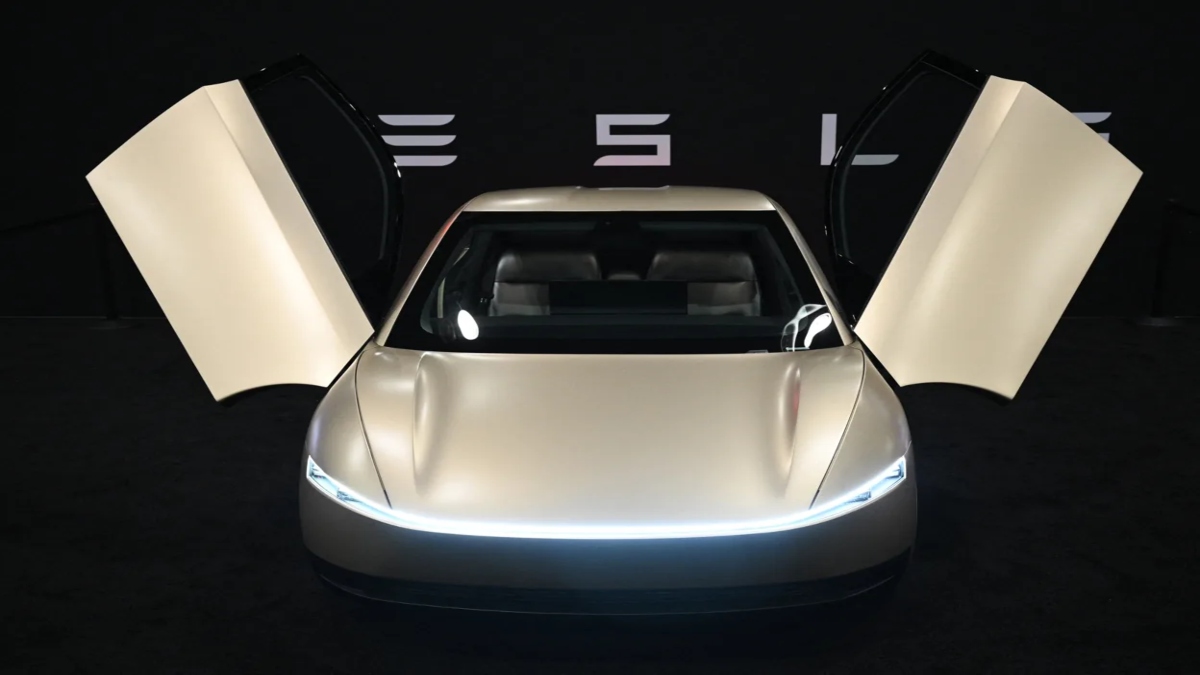Tesla is facing a rocky road ahead after reporting a sixteen per cent drop in automotive revenue for the second quarter, largely driven by slumping vehicle sales.
Tesla CEO and world’s richest man, Elon Musk, has acknowledged the downturn, warning the company could face “a few rough quarters,” amid backlash over his involvement in Donald Trump’s so-called “Department of Government Efficiency” (Doge).
The electric carmaker posted total revenue of 22.5 billion dollars, down twelve per cent year-on-year and falling short of Wall Street’s 22.7 billion dollar estimate. Operating income plunged by forty-two per cent to 900 million dollars, marking Tesla’s second consecutive quarterly decline.
Still, Musk sought to strike a positive note on the earnings call, calling it “a very exciting quarter” and insisting Tesla still has “a shot at being the most valuable company in the world.” He highlighted the company’s latest launches, including its robotaxi pilot in Austin, Texas, and a retro-themed Tesla diner in Los Angeles, which he claimed has been “a huge hit.”
He also showcased the company’s humanoid robot, Optimus, which he said is now able to walk freely and autonomously inside Tesla’s Palo Alto lab.
Despite the optimistic tone, Tesla shares dropped over four per cent in after-hours trading. The stock has seen dramatic swings this year—starting near record highs at 428 dollars in January, falling to 222 dollars in March, and currently down about thirteen per cent overall in 2025.
Tesla blamed its underwhelming results on reduced deliveries, declining regulatory credit sales, and a lower average selling price of its vehicles. Earlier this month, the company reported a fourteen per cent annual drop in global deliveries. In California, Tesla registrations have fallen for seven straight quarters, including a 21.1 per cent dip in the second quarter. In Europe, new Tesla sales in May dropped by 27.9 per cent compared to last year, even as rival EV makers saw growth.
Impact Shorts
More ShortsAdding to the turbulence is Musk’s controversial stint in the Trump administration, where his role at Doge involved aggressively downsizing federal agencies and slashing jobs. The political move triggered widespread protests and calls to boycott Tesla, damaging the company’s public image.
By early June, tensions between Musk and Trump had erupted into a public feud, with both lashing out at each other online—further spooking investors and sending Tesla’s stock tumbling once again.
“The Tesla brand is under attack,” said Dipanjan Chatterjee, principal analyst at Forrester. “The perception of Elon Musk has rubbed the shine off what was once a soaring automotive brand. Many now see Tesla as inseparable from a divisive public figure.”
In an attempt to shift focus, Musk has returned to showcasing Tesla’s innovation. The Austin robotaxi rollout, featuring around ten autonomous cars with safety drivers, was hailed by Musk as a success—but social media videos later showed the vehicles making alarming errors, such as driving in the wrong lanes and struggling with basic turns.
Tesla also missed Wall Street expectations on earnings. It reported adjusted earnings of 40 cents per share, below analysts’ forecasts of 43 cents. Revenue, too, came in slightly below the expected 22.74 billion dollars.
Investors were further rattled after Musk and CFO Vaibhav Taneja flagged concerns over rising tariffs and the impending expiration of a federal EV tax credit—both of which could put added pressure on margins.
Automotive revenue fell to 16.7 billion dollars, down from 19.9 billion during the same quarter last year, according to CNBC. Meanwhile, revenue from regulatory credits was cut nearly in half, falling from 890 million dollars to 439 million.


)

)
)
)
)
)
)
)
)



